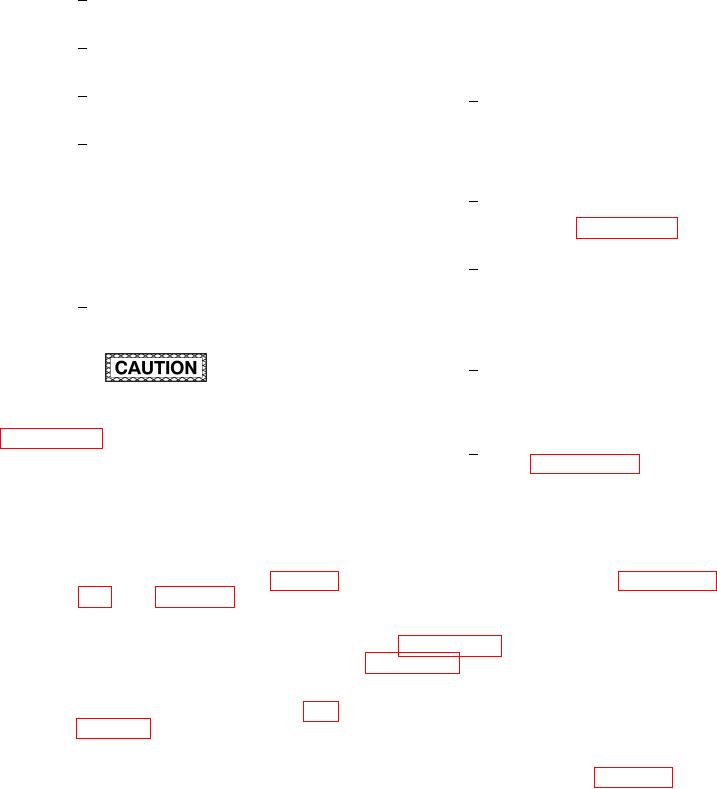
TM 1-1500-204-23-11
1
Pour adhesive into injection car-
(k) Remove any resin lash, deburr, and
tridge. Attach nozzle.
clean up the repair area.
Tape over intermediate injection
2
(l)
Reinspect the delaminated area using
holes with lash breaker tape.
NDI.
Maintain part at the speciied injec-
3
If no delamination exists after
1
tion temperature.
repair, or delamination is within
system speciic technical manual
Attach a regulated source of com-
4
limits for negligible damage, rein-
pressed air to sealant gun. Set air
ish per step (m) below.
regulator for 20 psi and inject adhe-
sive, using sealant gun and nozzle,
If delamination is within edge dam-
2
into one hole and ill until adhesive
age rebuild limits, repair in accor-
lows of part edge and out of the
dance with paragraph 79.b.
other drilled holes. The adhesive
must be allowed to low until it is
If delamination exceeds edge dam-
3
free of all air bubbles.
age rebuild limits, contact engi-
neering for disposition.
Remove heat lamp.
Wipe off
5
excess adhesive with clean, dry
(m) Reinish.
wiping cloth.
Sand the area smooth with 180 grit
1
abrasive paper. Vacuum sanding
dust from repair area. Wipe with
Too much pressure using a clamping device
clean, dry wiping cloth.
may result in resin starved areas.
See
paragraph 6-19j, Pressurization.
Apply inish system in accordance
2
with paragraph 7-13b or the system
Failure to properly cure adhesive in accor-
speciic technical manual.
dance with the speciied cure cycle will result in
reduced repair strength may not be detectable
h. Skin to Core Disbond. This repair is applicable
by visual or nondestructive inspection. This
to a disbond through which positive airlow is pos-
may result in loss of structural integrity.
sible. This would typically be used for honeycomb
core and may not apply to other core types. It is
(j)
Apply pressure using clamps, release
generally limited to small disbonds.paragraph 7-5e,
ilm and backup plates. See paragraph
rapid densiication, can also be used for small skin
6-19j and igure 7-38. Allow adhe-
to core disbonds. Larger disbonds may be treated
sive to cure or set at according to the
as penetration damage and repaired in accordance
system speciic technical manual or
with paragraph 7-5c core potting and replacement, or
the manufacturer s recommended cure
paragraph 7-5d, paste adhesive method. Refer to the
cycle per engineering disposition. Heat
system speciic technical manual for damage limits.
may be applied as required using an
This repair procedure is not necessarily applicable
approved heat lamp or other approved
to a particular weapon system. The applicability of
source. Operate heat lamps per para-
this repair depends upon additional factors such as
graph 6-19h. If room temperature cure
loading conditions and laminate thickness. Consult
is used, remove clamps, release ilm
the system speciic technical manual or engineering
and backup plate after a minimum of 8
for further guidance. Refer to igure 7-39 for the
hours. Allow to dwell at room tempera-
Process Flow Diagram for Disbond Repair.
ture for a minimum of 5 days.
7-65

